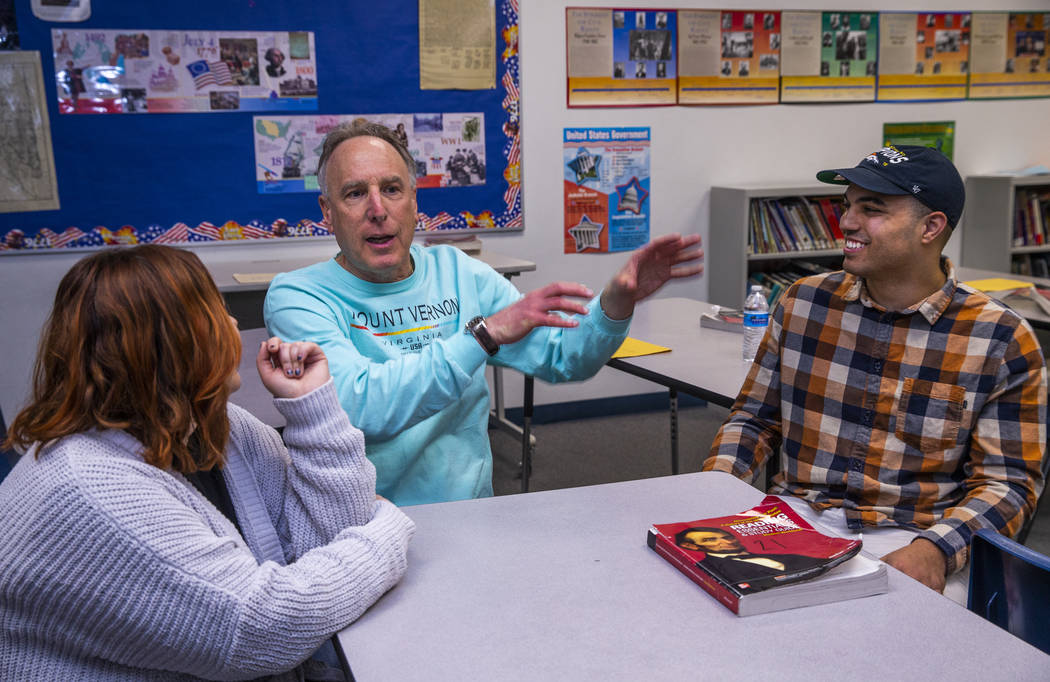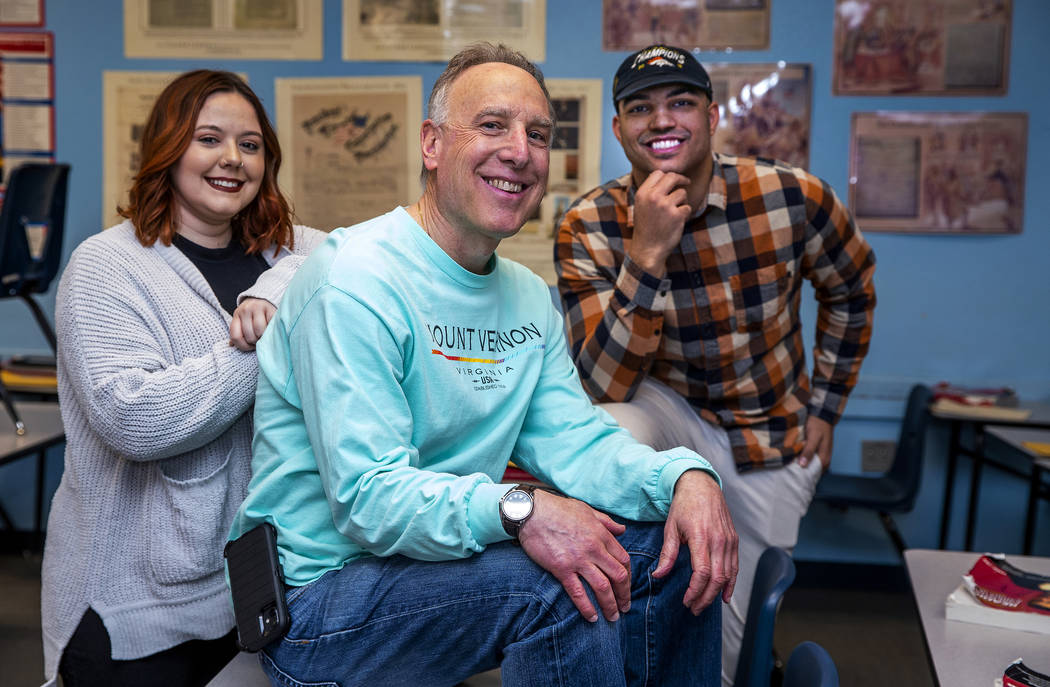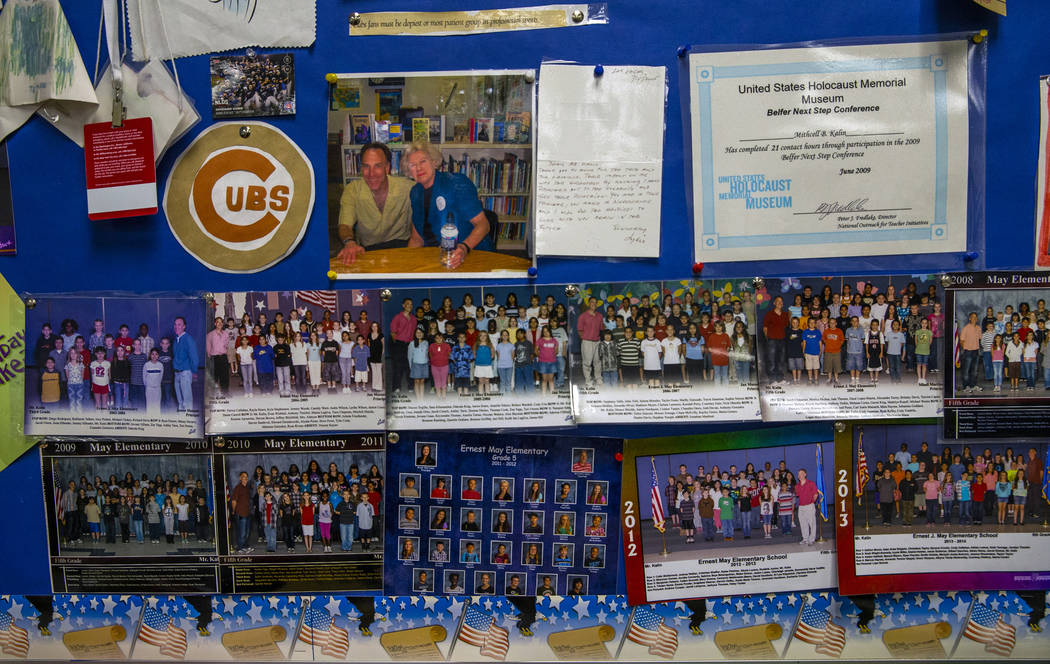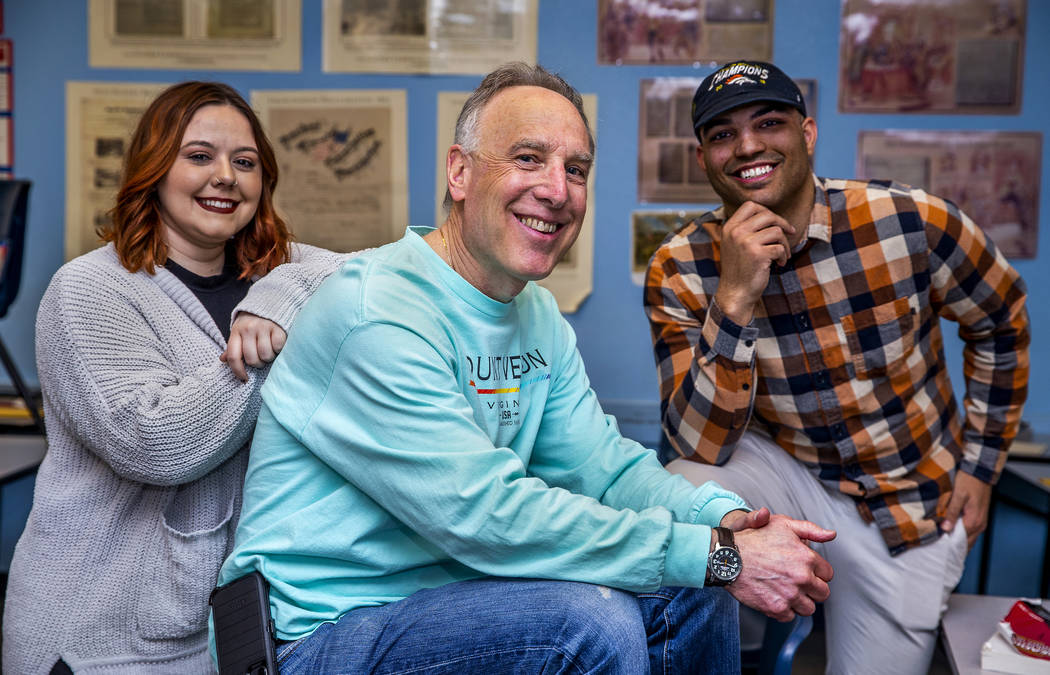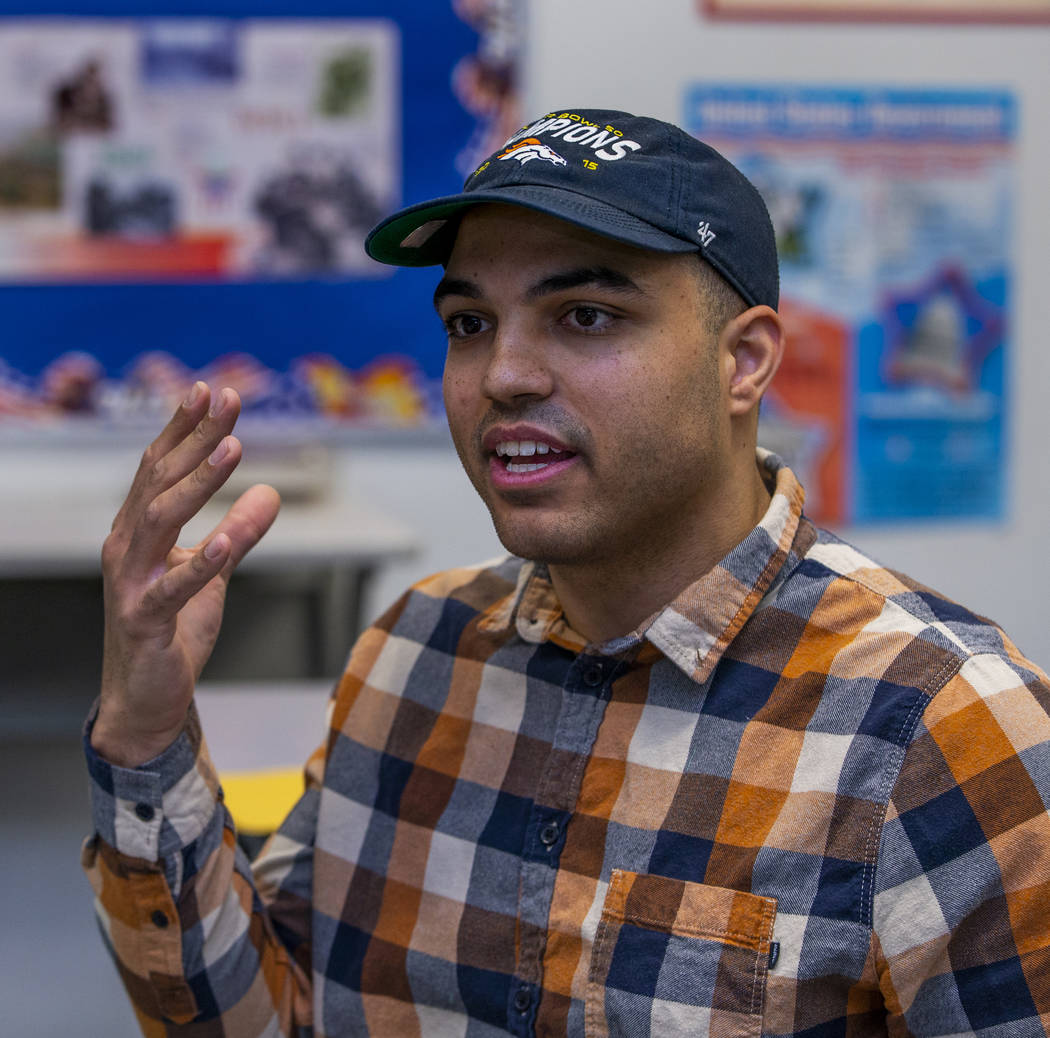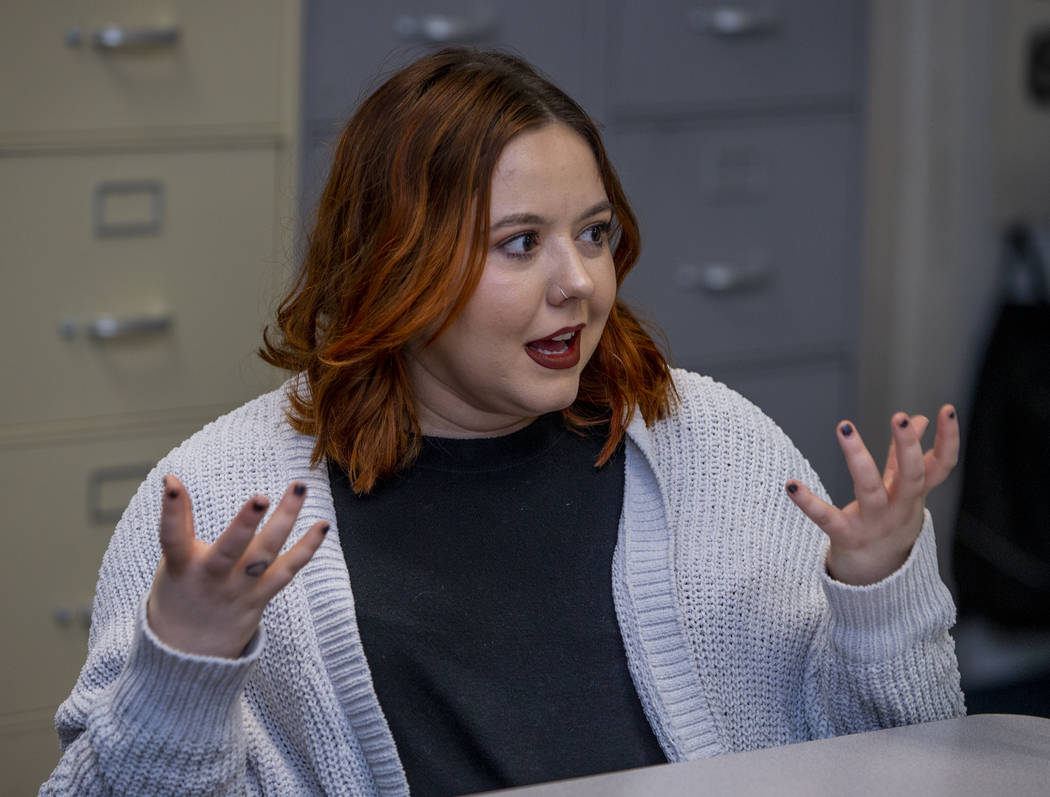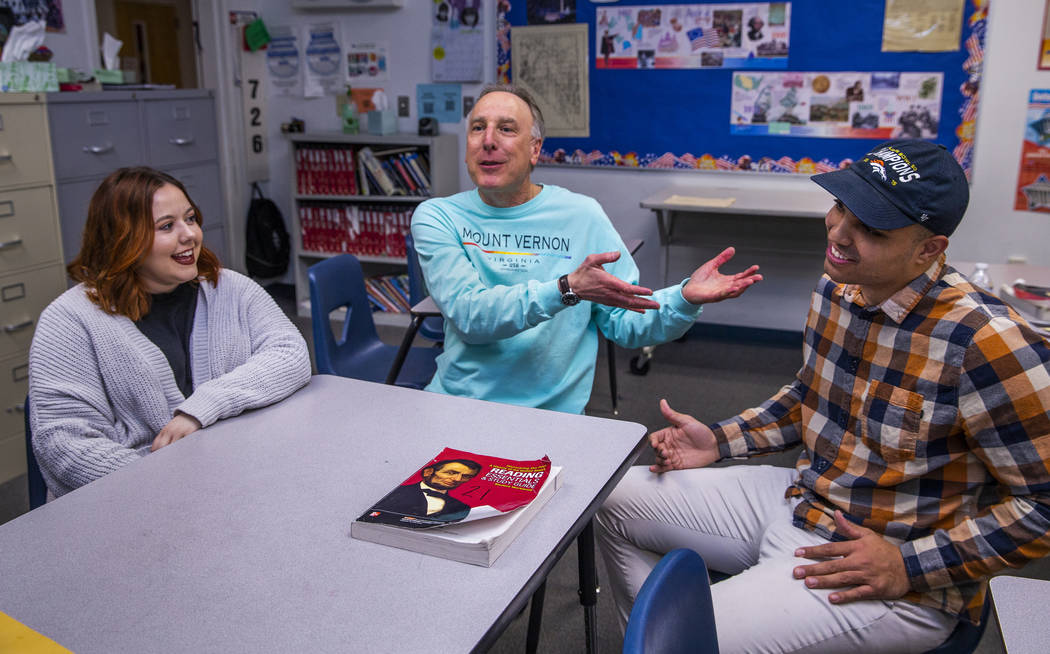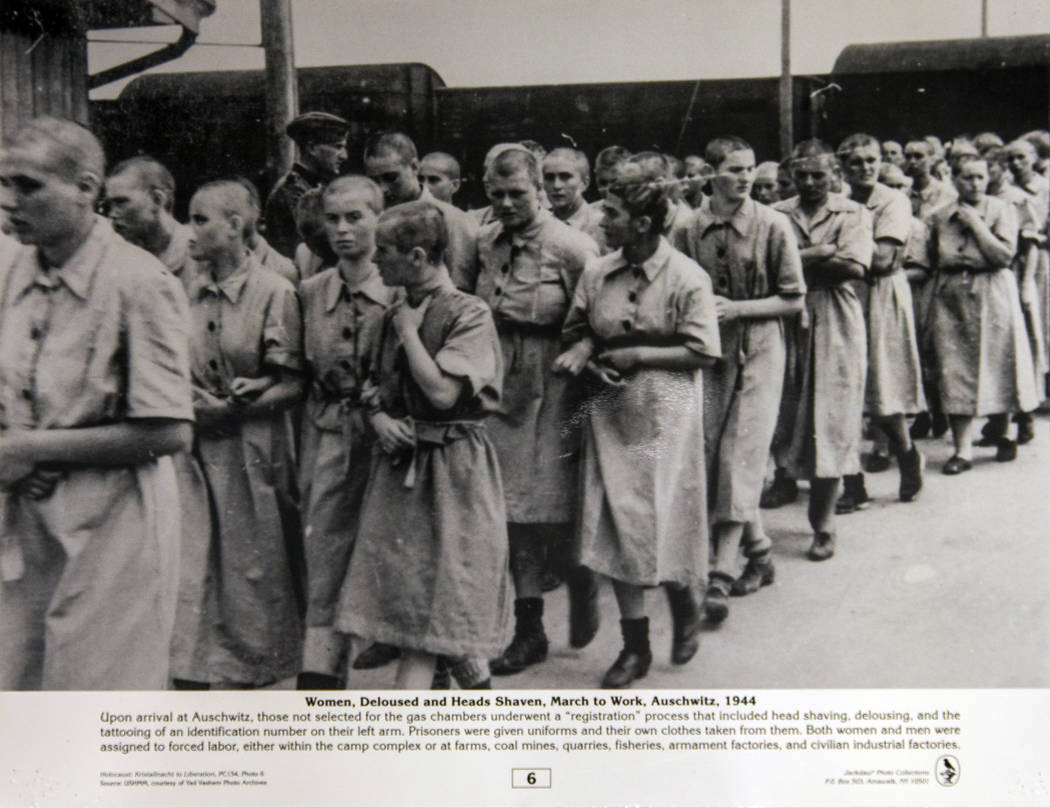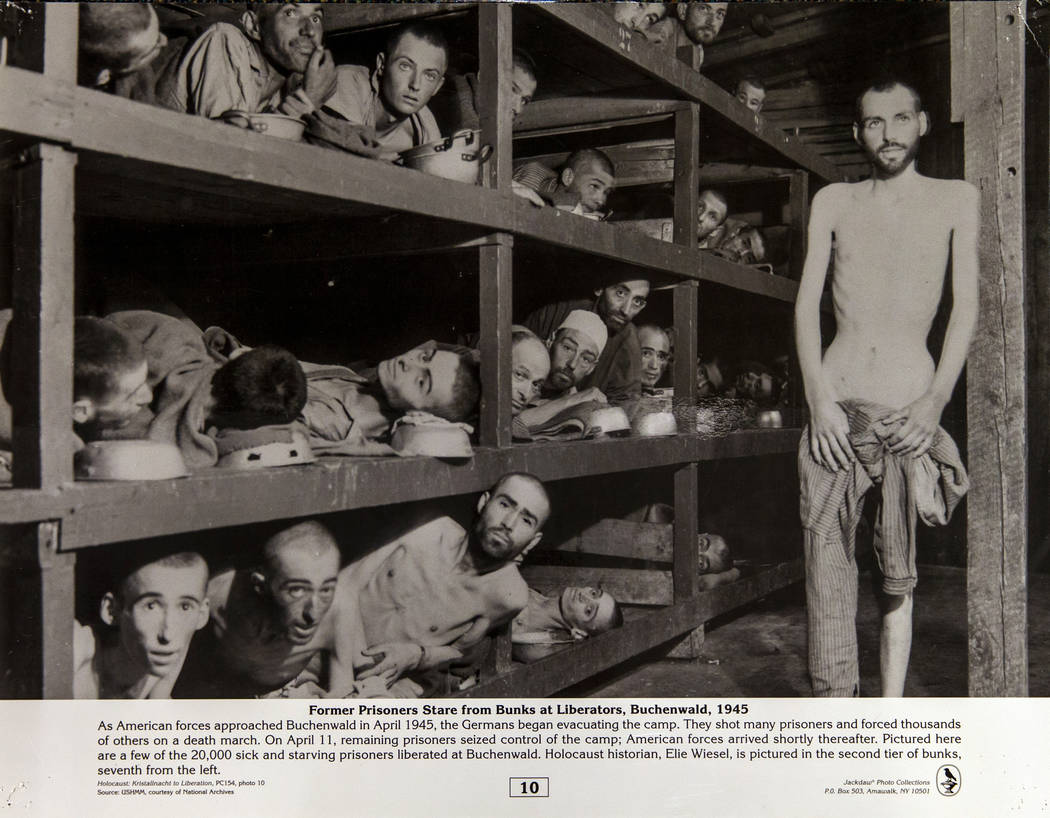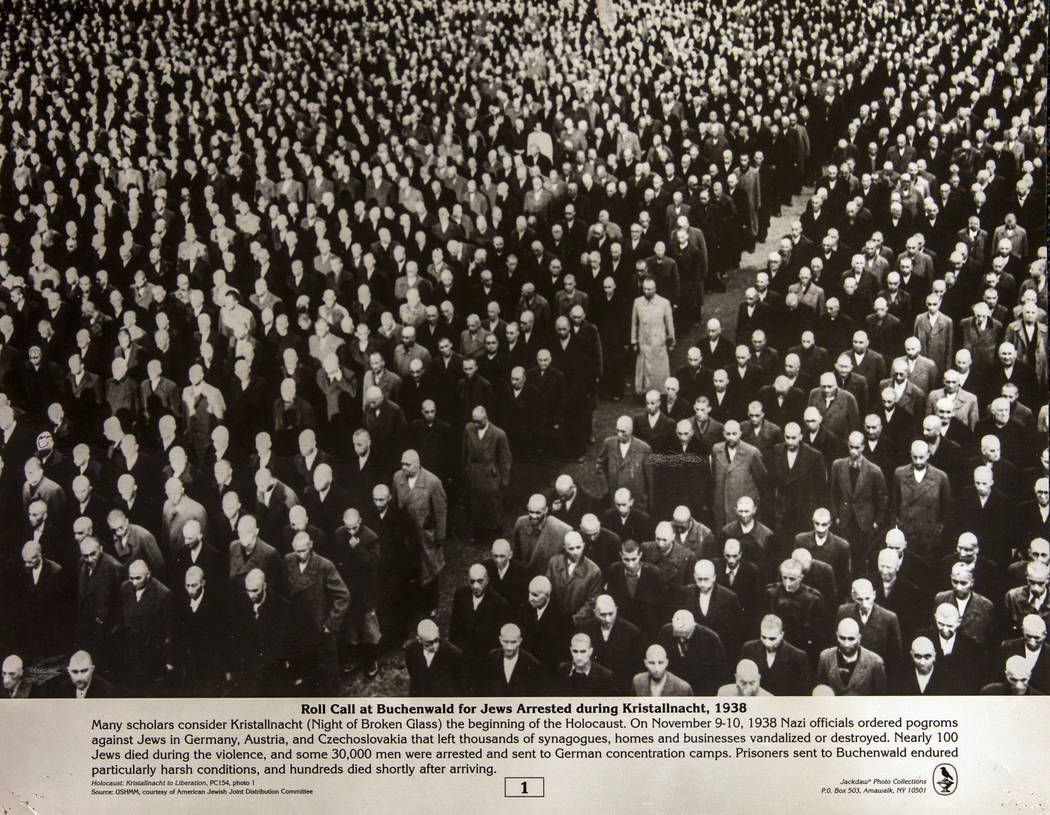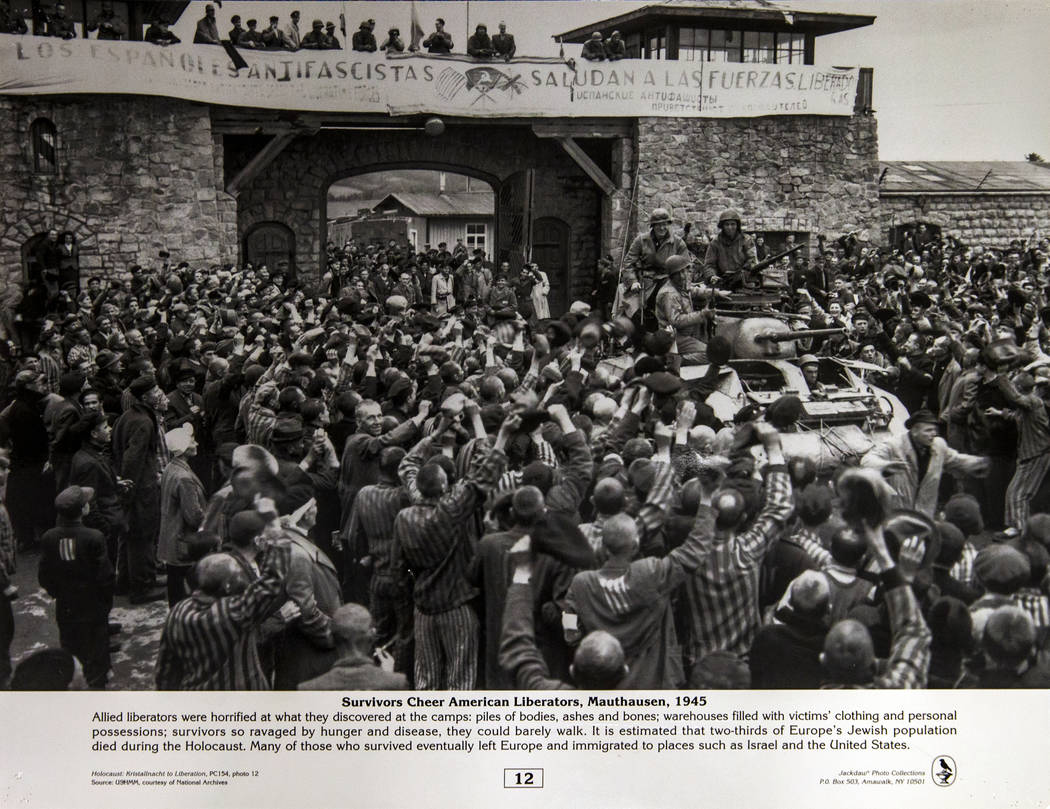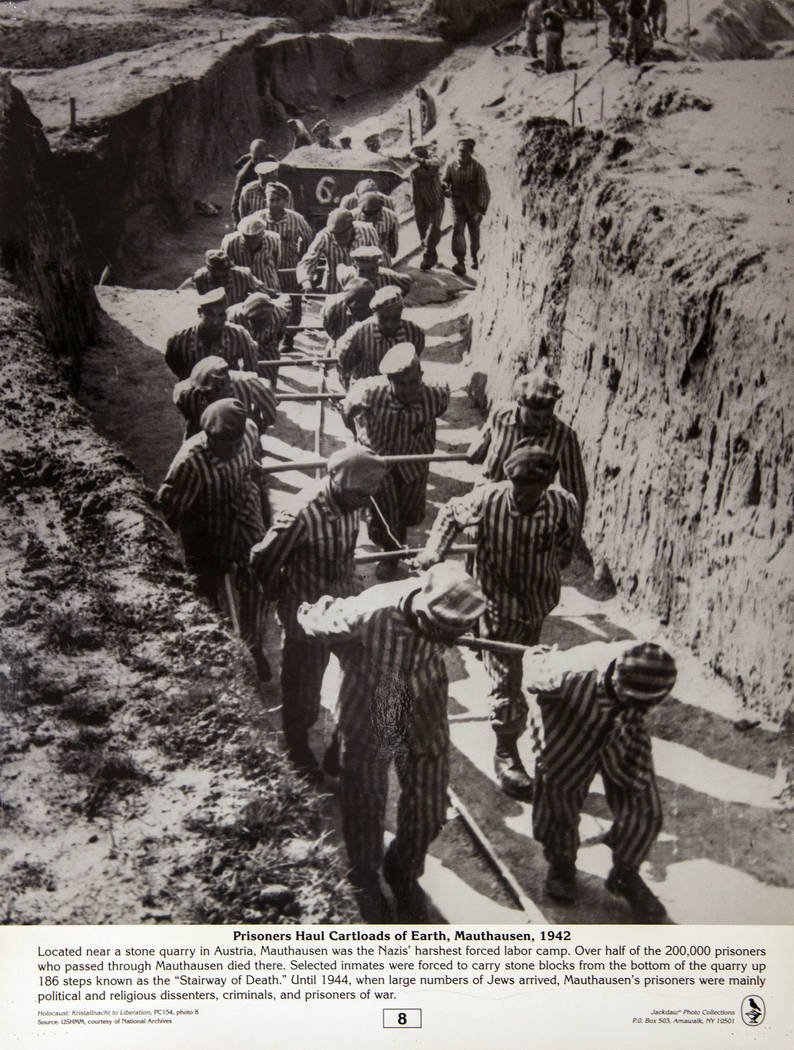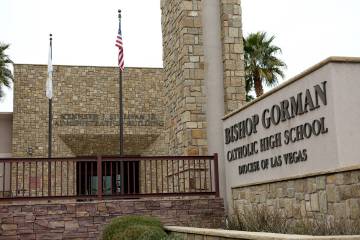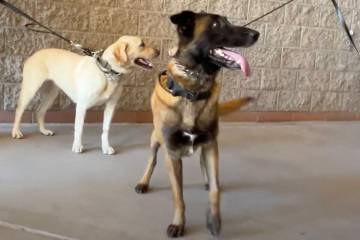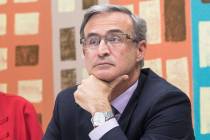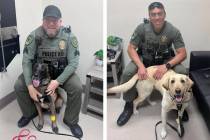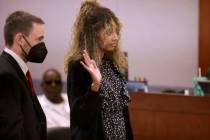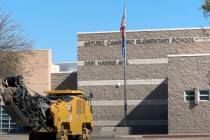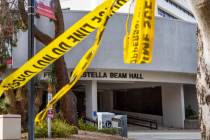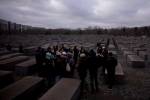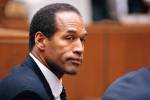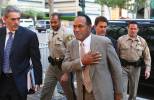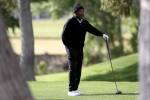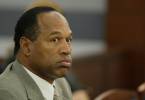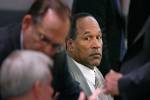Las Vegas teacher’s Holocaust assignment becomes life-changing
Sixteen years ago, Mitchell Kalin started a daily, 15-minute, read-aloud period for his fifth-grade students. Usually, the books were lighter fare, but one day Kalin decided to offer them a different sort of book: “Anne Frank: The Diary of a Young Girl.”
Kalin was surprised to find that students embraced the iconic memoir of a teenage girl’s Holocaust experience. When they wanted to learn more, Kalin found more books and videos, invited a Holocaust survivor to speak to the class and even created an after-school Holocaust program.
Now a seventh-grade history teacher at Justice Myron E. Leavitt Middle School, Kalin is a passionate Holocaust educator who spent 10 days last summer in Israel with Echoes & Reflections, an organization that helps teachers instruct students on the Holocaust, the systematic murder of 6 million Jews by Nazis during World War II.
Monday is International Holocaust Remembrance Day, and Kalin considers teaching young people about the Holocaust more important than ever given a nationwide increase in anti-Semitic incidents, and surveys that reveal dwindling knowledge about it.
Discovery
Kalin, now 60, had been teaching for about a year when he introduced students to Anne Frank. “They just soaked it up,” he says, and “once they became interested, the more it became my duty to provide more. I started bringing in more books, and kids wanted to read them.”
“I’m Jewish, so it’s something that has been important to me all my life,” he says. “Then, when I moved to Vegas, I saw kids who really didn’t know about it.
“It became my mission. There might be a lack of awareness in this city about the Holocaust, but it’s not going to be a lack of awareness among my students.”
Tiara Simpson and Dante Carroll, now 25, were members of that class. Carroll, who is biracial, says he had experienced racism himself and could relate, in some measure, to the anti-Semitism and prejudice that lay at the Holocaust’s roots.
“For me, it really looked like, ‘Wow, this is not something that just happened to you,’ because I remember being upset and confused, like, ‘Why would someone use these words toward me because I look different?’ ” he says. He related to Anne’s “not understanding how people could feel this.”
Simpson recalls going through a rough period in her life back then and she related to Anne Frank. In reading her words, “I grasped the seriousness of it immediately,” she says, and her interest in learning more “was almost immediate and it just spiraled.”
The fervor ignited by the book spread throughout the classroom. “Mr. Kalin almost created little monsters,” Simpson jokes. “If you didn’t know about the Holocaust, it was like, ‘Are you kidding me?’ ”
But, Kalin says, “the thing that made this explode and become my passion … was Lydia.”
Finding Lydia
Seeking a Holocaust survivor to speak to his students, Kalin was put in touch with Lydia Lebovic, who had survived Auschwitz and forced labor camps. “She came and everything changed,” Kalin says. “She just changed everybody’s lives — students, parents, the staff at our school all loved her.”
Simpson and Carroll became close friends with Lebovic and her husband, William. They talked with her, went to her home for dinner and became, in effect, her students, too. Lebovic died in October 2018, and the students’ voices still catch when they talk about her.
“I’m always inspired by the survivors because them being here now is the ultimate act of resistance,” Kalin says. “Hitler wanted to wipe them out. Most have families. The fact they’ve lived to a late age shows they won. Hitler didn’t. It’s inspiring.”
Making evil real
Testimonies — hearing how people’s lives were affected and lost — can help make the Holocaust real to students. During his workshop in Israel, Holocaust educators “told us, ‘Don’t make it about 6 million (killed). Say there was one who was killed 6 million times’ ” Kalin says.
“It makes it personal to them. There’s a reason Anne Frank’s diary is her testimony. Mrs. Lebovic, she’s a rock star and people responded to her when they see what she went through and saw that (some prisoners) went right, she went left, and (the former) died in hours. That affects them.”
Also important is placing the Holocaust into context and helping students understand that it wasn’t a single, isolated event, but the result of a series of decisions and actions that began with anti-Semitism and discrimination and escalated to hatred and murder.
One tool he uses is the Anti-Defamation League’s “Pyramid of Hate” (https://bit.ly/2NTpOh2), which illustrates how the acceptance of biased attitudes can progress to biased acts, discrimination, bias-motivated violence — and genocide.
“I tell my kids you could make a difference here,” at the base of the pyramid, he says. “When you’re on the playground, and you see kids make fun of another kid, are you going to stand by … or do you do something?”
Teaching empathy
“I tell (students) what happened, but then it’s all about the choices that were made, good and bad,” Kalin says.
”I do teach it as an historical event, because I want kids to know it did happen and why it happened. But I also want to teach to make sure it never happens again.
“I think the main thing,” Kalin says, “is to try to teach empathy.”
Simpson agrees.
“It’s not just knowledge of the Holocaust, but understanding the back end, too,” she says.
“I feel that was such an important thing for Lydia. She’d get so emotional at the end of every time she’d talk: ‘Never forget, never forget, never forget, and don’t hate.’ ”
Contact reporter John Przybys at jprzybys@reviewjournal.com or 702-383-0280. Follow @JJPrzybys on Twitter.



